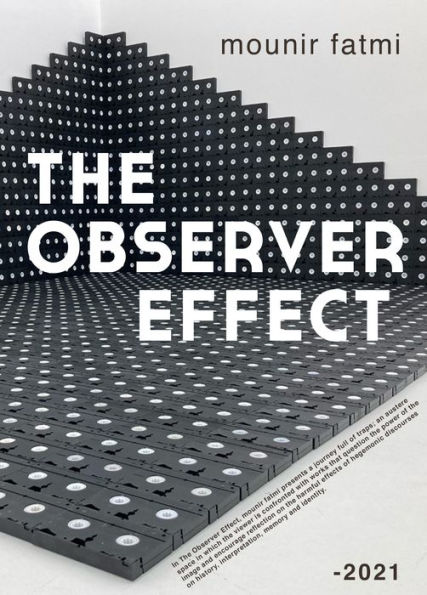"The exhibition we are now presenting, The Observer Effect, brings together a series of recent productions through which the artist explores new ways of creating from paradigmatic elements that have been present in his work: analog technology and the written word. The title refers to the theory of quantum physics by which the observer influences the observed matter. Something similar to what is known in psychology as the Hawthorne effect that establishes modifications in the behavior of individuals in response to the self-awareness of being observed.
Similarly, Marcel Duchamp declared: "I sincerely believe that painting belongs to both the spectator and the artist." With these references, mounir fatmi asks the viewer to submit to observation in an unusual way; look and be seen from another point of view, transforming and altering the works in a game of reciprocity.
In The Observer Effect, mounir fatmi presents a journey full of traps; an austere space in which the viewer is confronted with works that question the power of the image and encourage reflection on the harmful effects of hegemonic discourses on history, interpretation, memory and identity."
"The exhibition we are now presenting, The Observer Effect, brings together a series of recent productions through which the artist explores new ways of creating from paradigmatic elements that have been present in his work: analog technology and the written word. The title refers to the theory of quantum physics by which the observer influences the observed matter. Something similar to what is known in psychology as the Hawthorne effect that establishes modifications in the behavior of individuals in response to the self-awareness of being observed.
Similarly, Marcel Duchamp declared: "I sincerely believe that painting belongs to both the spectator and the artist." With these references, mounir fatmi asks the viewer to submit to observation in an unusual way; look and be seen from another point of view, transforming and altering the works in a game of reciprocity.
In The Observer Effect, mounir fatmi presents a journey full of traps; an austere space in which the viewer is confronted with works that question the power of the image and encourage reflection on the harmful effects of hegemonic discourses on history, interpretation, memory and identity."

The Observer Effect

The Observer Effect

Product Details
| BN ID: | 2940165075896 |
|---|---|
| Publisher: | Mounir Fatmi |
| Publication date: | 10/29/2021 |
| Sold by: | Smashwords |
| Format: | eBook |
| File size: | 5 MB |
| Age Range: | 18 Years |
